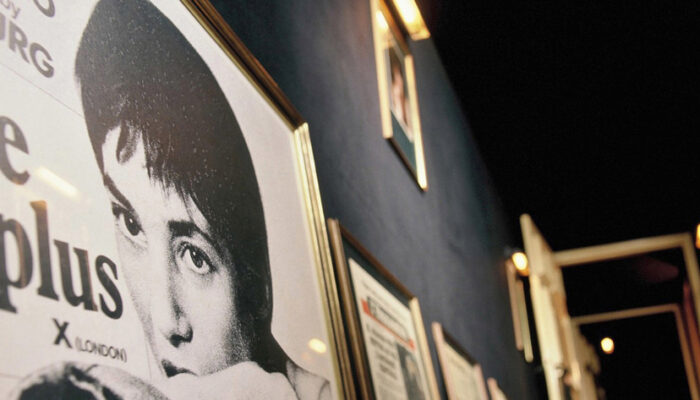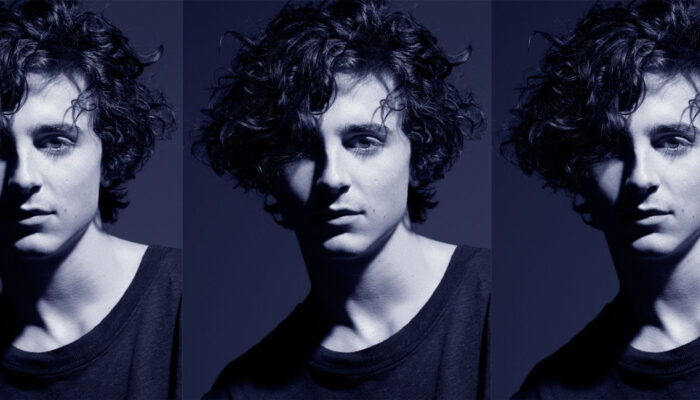Figure Dancing
A study of five 21st-century artworks where control, sex, slapstick, and vengeance come off the canvas and perform for us.
Words by Dean Kissick.
I met the painter Benjamin Senior once when we were both students at the Royal College of Art in Kensington. He had a box of cracked eggshells in his studio and was making up some egg tempera, using this medieval painting technique to realise his own visions of the modern world. He was the only student there working with egg tempera, so this was slightly unusual, but not so surprising, as painting always has a relationship with its own history. In recent years there has been a notable resurgence of figurative painting in contemporary art (it never went away, but now it’s flourishing in a way that was hard to imagine at the beginning of the decade), and it’s from here we can tell the story of this resurgence by looking at five pictures made in the 21st century and considering how they relate to the history of painting.
Benjamin Senior, Beacon Hill, 2014. Oil on linen, 100 x 150 cm. Courtesy Boltelang, Zurich, and Carl Freedman Gallery, London © Benjamin Senior.
Senior’s Beacon Hill (2014, above) is a painting of a hill somewhere, made years after we graduated. I’m not exactly sure where it is because there are many Beacon Hills in the UK, but it’s a place he’s painted more than once in his career. The style of the background reminds me of 19th-century British landscape painters, such as John Constable, but this is contrasted against a more modern rendering of the figures up front. As suits a traditionalist such as himself, Senior likes to draw from life rather than from photographs, and the considered style with which he depicts the shapes of our bodies brings to mind the principles of Bauhaus painting and design, particularly the way Oskar Schlemmer painted figures in the years between the wars, dividing people into cylindrical and spherical forms and painting them as though they were still lifes. In Senior’s composition, the gymnasts’ stretching bodies and the stripes along their uniforms make geometric lines that echo the criss-crossing of the rows of trees and the patchwork of fields behind them. Reality is arranged in such a way that it takes on the pleasing formal qualities of abstract painting. Different objects are brought together and flattened so that they begin to echo one another, suggesting that forms are universal.
The way that Senior puts together shapes and handles paint is also very controlled, reflecting the precision of competitive gymnastics and modern agricultural methods that his choice of subjects alludes to. When looking at Beacon Hill, with its extended bodies and rolling, autumnal slopes, a mixture of sexuality and rigid formality can be found that runs throughout his work, that is always there if you look for it; a hint of perversion, but only a hint, and lashings of tradition. His combination of the promise of youth and the soaring beauty of the Great British countryside reminds me of going to school and the ending of Cider with Rosie, where Laurie Lee writes:
“The girls were to marry; the Squire was dead; buses ran and the towns were nearer. We began to shrug off the valley and look more to the world, where pleasures were more anonymous and tasty. They were coming fast, and we were ready for them.”

Nicole Eisenman, Another Green World, 2015. Oil on canvas, 128 x106 inches. Courtesy the artist and Anton Kern Gallery, New York © Nicole Eisenman.
A motif of interlocking bodies and a theme of pleasure is also prevalent in Nicole Eisenman’s paintings and sculptures. Another Green World (2015, above) shows a house party coming to an end, winding down into that sleepy, loved-up state, by which point most repressions have been left behind. Sexual imagery is in abundance here. On the table, the ritualistic slicing of a thick, blood-red salami; in the background a nipple slips out of a scarlet dress. Another character is topless, upside down and their jeans are undone. Some ghostly white ass crack is on show. It’s all very intimate and there’s lots of hugging and bodily contact and limbs and fingers entwined. When you’re painting people, you’re often particularly interested in the relations between people, and Eisenman chooses to daisy-chain her friends together and make them different colours, like pale lemon and orange juice, and this gives a nice, psychedelic element, as though you’re tripping out at a party – just a little. She likes to paint her friends and their friendships with one another. In the words of activist and writer Grace Dunham, who has been painted by her more than once, “I feel like Nicole has this whole big way of seeing into people – not just gender, but colour (like blue or green), texture (maybe they’re snakeskin, haha) and like cartoon vs human. If she paints you, you don’t know if you’re gonna be a beautiful boy or a lumpy boulder.”
This painting takes its title from Brian Eno’s classic album Another Green World (1975), which Eisenman was listening to over and over again while she was making it. With its languid curves and flat pools of colour, it also somewhat resembles the album’s superb artwork. For the cover, Eno chose a detail from the painting After Raphael (1972) by Tom Phillips, which is, in turn, a version of an untitled votive picture from the Umbrian School (c.1490-1500) that is frequently attributed to a young Raphael. Phillips took this Renaissance drawing and remade it in the British pop art style, rearranging and stretching out various figures so that the composition fits perfectly into the golden ratio. If you look carefully, the record sleeve of Eno’s Another Green World can be seen in Eisenman’s Another Green World, in the hands of a bored-looking girl on the sofa. Looking at this painting now I’m reminded of my favourite song on the record, Golden Hours, which goes: “Several times / I’ve seen the evening slide away / Watching the signs / Taking over from the fading day.”
Perhaps these scenes were an inspiration for the scene of the party, a party I would have liked to have attended, slowly passing out in a corner, wrapped into other people’s bodies, with everyone changing colour before my eyes as the evening slides away.

Jamian Juliano-Villani, Messy View, 2013. Acylic oil on canvas, 48×50 inches. Unique, courtesy the artist.
The only self-portrait (at least, so far as I am aware) in this story is Messy View (2013, above) by Jamian Juliano-Villani, which shows her entertaining a visitor in her studio. While her painting includes references to some masterpieces of modern art – an Alexander Calder mobile floats, magically, in the corner above a quintet of naked, headless mannequins that cavort in the background, their twirling figures mirroring the forms of Henri Matisse’s La Danse (1910) – she also looks to pop culture and other histories of representation, such as comics, old advertisements and airbrushed graphic art, and mixes them into a unique aesthetic of her own. She takes us into a surreal cartoon world in which nothing adds up as neatly as it should and none of the different interlocking planes and spaces quite fits together. In the corner is a middle-aged figure in a baggy cream suit and wacky green glasses, smoking a pipe. Maybe he’s an art dealer. Or maybe he’s a curator, a collector, or a particularly sleazy magazine editor. Whoever he might be, she is performing for him, and us, on a raised platform like a stage.
She points at a painting (within the painting) of the word “ANGER”. By placing herself at the centre of the composition next to what is literally a painting of her anger, she seems to mock the male gaze. There seems to be a lot of anger on show in Messy View. A lot of violence, too. But it’s a sort of slapstick, unthreatening cartoon violence. Instead of a paintbrush, a dagger is stuck into the palette. A firing squad waits in the prison yard outside. Juliano-Villani’s pile of notepaper has grasping skeleton hands and googly eyes by it. The art dealer does not have any eyes. In any case, he’s not really paying any attention to Juliano-Villani, instead he’s looking off to the side. Something outside of the frame has surprised him: possibly the two people that are having sex on the other side of the room, their feet entangled on the wooden floorboards. There’s so much going on in this painting, so many messy views colliding and stories waiting to be told.

Lukas Duwenhogger, Perusal of Ill-Begotten Treasures, 2003. Oil on canvas.
Lukas Duwenhögger is also interested in the male gaze, but his attention is more directed towards homoeroticism. He paints men, almost always men, in scenes of everyday decadence. His most famous painted scene, Perusal of Ill-Begotten Treasures (2003, above) takes place on what looks like a hillside in a Mediterranean port city (perhaps Istanbul, where he has lived for nearly two decades), and its sweeping backdrop brings to mind great Renaissance paintings such as Pieter Bruegel the Elder’s Landscape with the Flight into Egypt (1563) which hangs in London’s Courtauld Gallery. Given the title, it can be surmised that we’re observing some kind of illicit antiques deal in a park, up on a hill on the outskirts of the city far from prying eyes. A figure sits on spread-out newspaper smoking a cigarette and counting out a large amount of money. Standing above him is a dandyish enforcer in an outrageous white fur coat. On the near side a man in a pinstripe suit is watching from behind a tree. Perhaps he’s a lookout. Or perhaps, as some critics have suggested, he’s up to some other mischief of his own and this park is a cruising spot.
On the lawn, a collection of stolen merchandise is on display: a yellow buttoned chair, a diamond-patterned writing desk, a flowery vase the colour of a duck’s egg and, leaning against its side, a small painting facing away from us, so we cannot see it. Nobody is looking at it anyway. Here, in Duwenhögger’s painting, we have an artwork about the beauty of artworks and decorative objects but also about the beauty of men. His composition is laden with various suggestions of pleasure; the fellow reclining on the grass is fondling, sombrely, a pearl necklace, and we all know what pearl necklaces mean. But at the same time, interlaced with this sultry, melodramatic glamour is the question of what kinds of criminal activities and histories of violence has led to these men acquiring such beautiful objects, and one can hardly help but wonder exactly how “ill begotten” these gains were.

Julien Nguyen, Tamberlaine, 2015. Oil on linen, wood and silver-leaf frame. Courtesy Stuart Shave/Modern Art, London © Julien Nguyen.
The last painting in this story is Julien Nguyen’s Tamburlaine (2015), an oil painting with a silver-leaf frame that takes its name from Christopher Marlowe’s play Tamburlaine the Great (1588). The play, which was a huge success in London when it opened, tells the story of Timur the Lame, the 14th-century Turco-Mongol emperor who remained fresh in the popular imagination. He was a cruel man. On stage, he was shown capturing the rival emperor Bajazeth, imprisoning him in a cage and only releasing him in order to use him as a footstool. Of course Nguyen’s version is far from a literal interpretation. It’s a painting one could contemplate for a long time and yet keep continuously see different things, like when one stares at a fire for long enough so that the devil’s face appears in the smoke. Some parts are figurative, others are abstract, most are lost in the distance in between. From this, maelstrom shapes appear: a mountain range in the mist, a love heart, a long-lashed eye. Like the world of Jacobean theatre from which it found its title, the painting represents a space of transformation in which figures change their form and one’s senses play tricks.
Against the chaos of the paint are contrasted two floating heads. Both have the sort of downbeat, gloomy poker faces typical of northern Renaissance painting, in which characters often seem to be going out of their way not to betray any signs of emotions. They are androgynous, pale and beautiful (as always seems to be the case in Nguyen’s paintings) and neither resemble a Turco-Mongol conqueror at all. Where is Timur? It was only after I’d looked at this painting many times that he emerged from its heart, as if by magic, a slight figure of death on a wraithlike devil-horse galloping through the storm. At first I hadn’t seen the horse at all, and then for days I mistook it for a dog or a pop-weasel; these kinds of problems are rarely encountered when considering abstract paintings. There is also the curiosity of the floating heads. One looks downcast at the floor while the other peers out at us, from under a severe fringe, through what appears to be a tear in the fabric of, not so much reality, but whatever hellish landscape we find ourselves in here. The spaces have been reversed. They are trapped in there, in what looks like the real world, and we are a part of the vengeful, hallucinatory nightmare descending upon them.
Once I was taking ecstasy at a house party in the hills of Los Angeles and Nguyen came and sat down next to me. While we were talking about art and I was coming up, he sent me a link to an hour-long lecture about Renaissance Florence at the Metropolitan Museum of Art, New York, titled Among Rare Men: Bronzino and Homoerotic Culture at the Medici Court. This struck me as an unusual thing to send somebody you’re talking to in a garden after midnight, but also as a neat distillation of his interests. Many of the topics that the lecturer, Lisa Kaborycha, discusses in this talk are things that I see in this painting: concealed meanings, ambiguous sexuality, references to the history of painting, danger, explosions of Bacchanalian joy in the paint. At the same time the painting is literally nothing like a Bronzino. What I most enjoy about Tamburlaine is that it shows us a place that hasn’t been depicted before, at least not in a visual form. It’s a weird scene and one that could only really convincingly exist in a painting or one’s imagination. A figurative painting can give us a new way of looking at the world but it can also, as is the case here, show us worlds that are yet to exist. Today’s figurative paintings can be very abstract. They can be a lot of different things at the same time, and in so doing they can visualise the way we live now in a constant colliding of worlds, bouncing from screen to screen, moving through cities, surrounded by millions of changing images.




